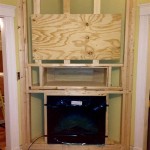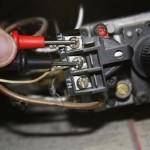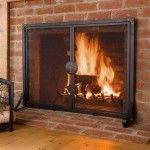Ventless Gas Fireplaces: A Comprehensive Overview
Ventless gas fireplaces offer a convenient and aesthetically pleasing heating solution for homes. Unlike traditional fireplaces, they do not require a chimney or venting system, making them easier and more cost-effective to install in various locations. While they offer numerous advantages, understanding their operation, safety considerations, and maintenance requirements is crucial for ensuring safe and efficient use.
This article will provide a detailed explanation of ventless gas fireplaces, covering their functionality, benefits, and relevant safety information. Understanding the mechanics and limitations of these appliances allows informed decisions regarding their suitability for different living spaces.
How Ventless Gas Fireplaces Function
Ventless gas fireplaces operate by burning natural gas or propane in a specially designed firebox. The key distinction from vented fireplaces lies in the combustion process. Ventless models are engineered for nearly complete combustion, minimizing the production of harmful byproducts such as carbon monoxide. This is typically achieved through the use of oxygen depletion sensors (ODS) and highly efficient burner systems.
The ODS is a crucial safety component that monitors the oxygen levels in the room. If the oxygen level drops below a certain threshold, indicating incomplete combustion and a potential buildup of carbon monoxide, the ODS automatically shuts off the gas supply to the fireplace. This feature helps prevent carbon monoxide poisoning. The burner system is also optimized to maximize combustion efficiency and minimize the release of unburned gases.
The heat generated by the burning gas is radiated directly into the room, providing supplemental heating. The decorative aspects of these fireplaces, such as artificial logs or glass beads, are designed to enhance the aesthetic appeal while allowing for efficient heat distribution. These components are specifically chosen to withstand the high temperatures produced during operation.
Advantages of Ventless Gas Fireplaces
The primary advantage of ventless gas fireplaces is their ease of installation. Because they do not require a chimney or venting system, they can be installed in almost any room in a house, provided there is a gas line connection. This flexibility makes them an attractive option for homeowners who want to add a fireplace without incurring the significant costs and structural modifications associated with traditional vented units.
Cost-effectiveness is another significant benefit. The absence of venting requirements reduces both installation costs and ongoing maintenance expenses. Furthermore, ventless fireplaces are generally energy-efficient, converting a high percentage of the fuel into usable heat. This efficiency can translate to lower heating bills, especially when used as a supplemental heating source.
Aesthetic versatility is also a notable advantage. Ventless gas fireplaces are available in a wide range of styles and designs, from traditional log sets to modern linear models. This variety allows homeowners to choose a fireplace that complements their existing décor and personal preferences. Many models also offer customizable features, such as adjustable flame height and remote control operation.
Safety Considerations and Maintenance
While ventless gas fireplaces are designed with safety features, it is essential to adhere to specific guidelines to ensure safe operation. Proper ventilation is paramount. Although these fireplaces are designed for nearly complete combustion, a room that is too tightly sealed can still experience a buildup of carbon monoxide. It is recommended to crack a window or door slightly to provide a source of fresh air, especially during extended use.
Regular maintenance is also crucial. The burner system should be cleaned periodically to remove any debris or obstructions that could impede efficient combustion. The ODS should be inspected regularly to ensure that it is functioning correctly. It is recommended to have a qualified technician inspect the fireplace annually to perform a thorough safety check and ensure that all components are in good working order.
Furthermore, it is imperative to install and maintain a working carbon monoxide detector in the vicinity of the fireplace. The detector will provide an early warning in the event of carbon monoxide buildup, allowing occupants to evacuate the area and seek medical attention if necessary. It's advisable to have multiple detectors strategically placed throughout the home, especially near sleeping areas. Following the manufacturer's instructions for installation, operation, and maintenance is essential for safe and efficient use of a ventless gas fireplace.
Specific state and local regulations may govern the use of ventless gas fireplaces. It's essential to check local building codes and regulations before purchasing and installing a unit. Some jurisdictions may restrict or prohibit their use due to concerns about indoor air quality and safety. Consulting with a qualified HVAC professional or building inspector can help determine whether a ventless gas fireplace is appropriate for a particular location.
:max_bytes(150000):strip_icc()/ventless-gas-fireplaces-4160746-hero-f9d4bdcd9bd446eb84406de306f790ba.jpg?strip=all)
How To Pick Out A Ventless Gas Fireplace

What Is A Ventless Gas Fireplace Experts In Gaithersbutg Md

What Is A Ventless Gas Fireplace Dorr Oil

Ventless Fireplaces Natural Gas And Propane

Ventless Gas Fireplace Vent Free Modern

Ventless Gas Fireplace Propane

Vent Free Archives SÓlas Contemporary Fireplaces

White Mountain Hearth Vfpa32bp Vail Ventless Premium Fireplace With Slope Glaze Burner And Log Set 32

Duluth Forge Dual Fuel Ventless Gas Fireplace With Mantel 32 000 Btu Buyersdepot Com

Vent Free Gas Fireplaces Inserts Stoves Napolis Godby Hearth And Home
Related Posts








